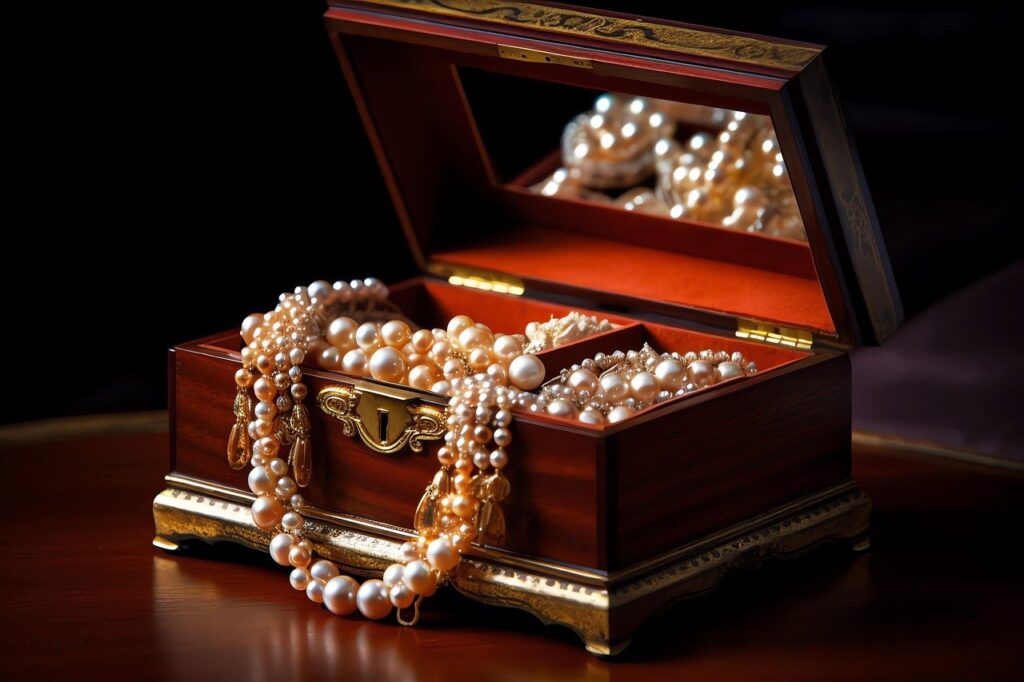Precious jewelry, such as bracelets, rings, necklaces, and earrings, helps us shine and stand out in any social setting. Plus, some carry priceless emotional value, connecting our hearts with loved ones or long-gone family members.
But, if you want to make sure your jewelry collection stays looking gorgeous for years to come, you must perform some regular maintenance. Cleaning is part of this practice.
Luckily, most jewelry items can be cleaned at home using household items like baking soda or gentle dish soap. If you’re not sure what works with each stone or precious metal, here are a few tips to make things easier.
Contents
Table of Contents
ToggleCaring for Gemstone-Embedded Accessories
Gemstone-embedded accessories, like the ones available in this stunning selection of ruby rings, need special care to maintain their brilliance. Due to their design and composition, these pieces require different cleaning methods compared to plainer jewelry items.
First, always inspect your pieces for loose stones before cleaning. Tighten any settings or seek a professional’s help if needed. For routine cleaning at home, use lukewarm water mixed with mild dish soap. Gently scrub the piece using a soft toothbrush.
Avoid exposing gemstones, especially vividly colored ones like rubies, to extreme temperatures or harsh chemicals. These can damage the stones and weaken settings. After washing, a microfiber cloth works well for drying and polishing.
Maintaining Diamond Jewelry
Diamonds need a blend of care and caution to preserve their brilliance. Despite their reputation for being the hardest natural material, diamonds can still accumulate dirt and oils, dulling their sparkle.
To clean your diamonds at home, soak them in a solution of warm water and mild dish soap for about 20 minutes. Use a soft toothbrush to gently scrub around the settings where grime often hides. Rinse thoroughly under lukewarm water, then pat dry with a lint-free cloth.
Avoid household cleaners containing bleach or abrasives; they can damage both the diamond and its setting. Ultrasonic cleaners offer deeper cleaning but should be used sparingly as they might loosen stones from older or more delicate settings.
Coolest Practices for Cleaning Gold and Silver Jewelry
Both metals benefit from gentle, regular cleaning to prevent tarnish and grime buildup.
For gold pieces, mix warm water and mild dish soap. Soak the jewelry for about 15 minutes, then use a soft toothbrush to clean intricate details. Rinse thoroughly with warm water and pat dry with a lint-free cloth.
Silver requires similar care but may also need extra help for tarnish. Mix baking soda with water to form a paste, or use commercial silver cleaner sparingly – avoid abrasive substances that can scratch the surface. Gently rub the paste on your silver items using a soft cloth, rinse well under lukewarm water, and dry immediately.
Store gold separately from other metals in soft pouches to avoid scratches. For silver, consider anti-tarnish strips or cloths in your storage area.
Ultrasonic Cleaners: Pros and Cons
Just like you deep clean your house once a year, your jewelry also needs deep cleaning from time to time. This is when you can use ultrasonic cleaners, but you have to be aware of the drawbacks.
These devices use high-frequency sound waves to create tiny bubbles that dislodge dirt and grime from intricate areas. This method works well for metals like gold and platinum, making your pieces look professionally cleaned without much effort.
However, ultrasonic cleaners aren’t suitable for all types of jewelry. Under intense vibrations, delicate gemstones such as opals, emeralds, or pearls can crack or lose luster. The cleaner might also loosen stones from their settings over time.
Wrap Up
Keeping jewelry clean ensures it remains beautiful and wearable for years. Plus, when you understand the specific care needs for different materials, you can protect their aesthetic and sentimental value.



